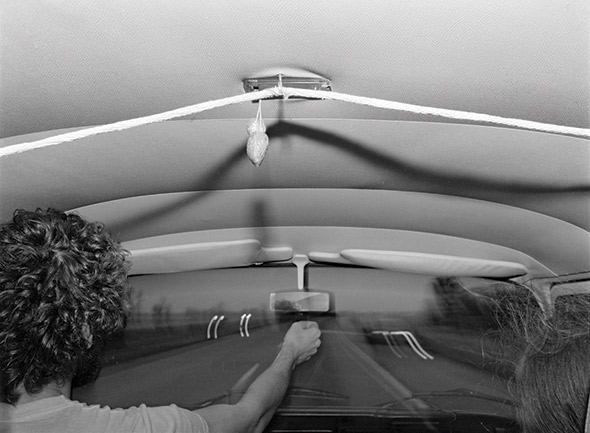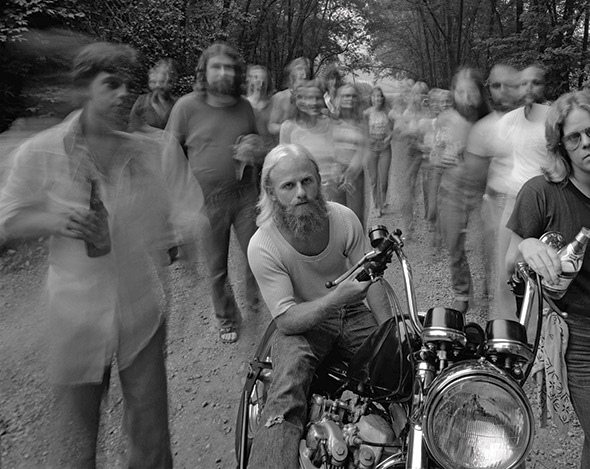The interstate highway system turns 50 this month


Text by Angelina Sciolla
Photographs by Michael Northrup
“To understand America, you must understand highways,” wrote Washington Post reporter Robert Samuelson. “In this past half-century, these masochistic marvels have – along with telephones, television and jet planes – reshaped American culture.”
Masochistic marvels? Most of us probably never considered such an alliterative phrase while on our way to a vacation spot or that first semester spent at some campus far from home. However, given the amount of work and sweat generated in creating the most expansive highway system in the world, there’s no doubt a little pain was involved.
Samuelson was writing in celebration of the Interstate Highway System’s 30th birthday back in 1986. Now a half-century old, the Interstate, a 46,000-mile system of highways that weaves red and blue states together and crisscrosses the country in a manner more democratic than political primaries, boasts another legacy. The vision of President Dwight D. Eisenhower has become a part of American mythology, highlighting the restless expanse of a nation obsessed with mobility, escapism and, above all, automobiles. The day Eisenhower signed the legislation creating the interstate system, there were about 54 million cars on the road. Fifty years later that number has nearly tripled.
Construction of the interstate highway system began in the summer of 1956, but the American obsession with the open road had already begun. Route 66, the winding highway connecting Chicago to LA, had already been permanently enshrined in the popular culture with a catchy song that would later inspire a ’60s TV show. In 1957, Jack Kerouac published his novel On the Road, a literary journey that sparked the imagination and wanderlust of a generation just as the first few hundred miles of interstate highway were being paved.
It’s been said Kerouac never set out to be a spokesman for any kind of movement. Yet, his work turned him into a counterculture icon. Similarly, Eisenhower – who was so impressed by the German Autobahn while commanding Allied troops in Europe during World War II – vowed to build a system of roads in the interest of national security. Such a system could transport people out of cities quickly in case of a nuclear attack; troops and supplies could move more efficiently and commerce would pulse through the country as the lifeblood of a rapidly growing economy.
The thing is, Ike – in his desire to secure the nation – helped to democratize it and free it from its own physical vastness and provincial mentality. He hadn’t counted on seeing long-haired easy rider Peter Fonda motorcycling across the Southwest in one of the most iconic images of the ’60s, or Jon Voight taking in the kitschy scenery of middle America from his Greyhound bus window as a Nilsson soundtrack ushers him to his fate as street hustler Joe Buck in Midnight Cowboy.
All decisions have unintended consequences, however. Americans has always been fascinated with the wanderer – the cowboy, the hobo, the noirish drifter and the relatively unencumbered manner of travel offered by the Interstate turned everyone who could afford a car or a bus ticket into a modern-day Woody Guthrie. The road permitted witness to the diversity and idiosyncrasy of American life from Burlington to Bakersfield.
While the Interstate changed the way Americans take vacations – it in fact spawned the long weekend and the “mini-vacation,” turning once-desolate beachheads into family resorts and spring break destinations – it also impacted our collective psychology and ongoing narrative as a nation. It made it easier for Deadheads to follow the band and for young couples to speed towards Las Vegas or Tijuana for quickie elopments. It gave us Holiday Inn, Howard Johnson and even the Bates Motel. The construction of the Interstate gave way to suburbia and the resulting white middle-class angst that led countless young people back onto the highway in search of something more visceral than tract housing and manicured lawns. The road trip became a youthful right of passage that followed immediately after passing the driver’s exam.
Of course, travel and adventure as subject matters always found their ways onto the pages and movie screens of America, from Huckleberry Finn to The Treasure of the Sierra Madre. This time, however, it was the accessibility provided by roads to cities, loved ones and sought-after dreams that became the center of the travel narrative; it was more about the journey than the destination. Americans sought to discover themselves as they discovered a country that remained new to them and full of surprises.
The best examples of the existential road trip came during the ’60s and ’70s. This was a Golden Age for road movies that departed from the corny Hope-and-Crosby-type vehicles. Movies like Hells Angels on Wheels, Easy Rider and Badlands offered morally ambiguous characters a chance to flee from authority, reflecting a cultural shift initiated by the Vietnam War and government scandal, and also illuminating yet another dark crevice of the American psyche – a fascination with outlaws. Outlaws included a few benevolent characters as well, like Jake and Elwood in perhaps the most successful American road movie ever made, The Blues Brothers. Two decades later, the darker, edgier road trip film would re-emerge with Gus Van Sant’s My Own Private Idaho and Oliver Stone’s Natural Born Killers.
Now that highways were becoming longer, straighter and less encumbered by traffic signs, a sense of escapism and the fascination with speed spawned a series of films about cross-country races, from The Great Race to Smokey and the Bandit. Trucks carrying commerce became an increasingly familiar site along the highways, and truckers got their moment with films like Stephen Spielberg’s Duel and the entertainingly awful Convoy, an homage to the CB radio craze of the ’70s.
The musical score to the nation’s road trip obsession was provided by everybody from Elvis and Johnny Cash to Springsteen and the Sugarcubes. The Federal Highway Administration maintains a website listing literally thousands of road songs, from ’50s rocker Chuck Berry – who sang, “Did I miss the skyscrapers, did I miss the long freeway?” in “Back in the U.S.A.” – to “Velvety” by Frank Black, who laments losing his speed “out on the Eisenhower.” Even non-Americans felt the lure of the endless highway. The Bee Gees penned a forgettable road tune that rhymed Alaska and Nebraska. Dire Straits wrote of the “Long Highway,” and Eric Clapton climbed into his Pontiac and drove from Oklahoma to California “where people all live so fine.”
The Interstate has had a bit of a dulling effect on the culture as well, turning those old Lincoln Highway and Route 66 journeys that seduced road-trippers to alligator farms and carnival sideshows into unremarkable and efficient paths to the next exit ramp. Now the alligator farms are all but dried up and the roadside souvenir shops have been flattened by an extra lane on the highway. Truck stops still reign, but instead of the greasy spoon, they offer megabranded snack bars and Starbucks coffee. Nowadays we take our journeys along uninterrupted stretches of highway peppered with rest stops where one can purchase a Big Mac and a chimichanga before heading back out onto the highway with a box of Krispy Kreme donuts. As is often the case, character is often sacrificed for convenience.
Still, the lure of the road trip endures, despite volatile gas prices, traffic congestion and an information superhighway that merely keeps us virtually connected to one another. American wanderlust is hard to squelch. All the more reason to bring on the hybrids.

